Edward Bramley Gammell
1908-1999
Edward Bramley Gammell (known as Ted) was the 7th child and 5th son of Sir Sydney James Gammell of Countesswells and his wife Alice Stobart. He was born on 13 February 1908 at Countesswells House. He received his initial education from a governess, but in the summer of 1918 he joined his elder brother William at Ardvreck, a boarding Preparatory School near Crieff in Perthshire. In the autumn of 1921 he left Ardvreck, and went to Clifton College near Bristol, where his father and one of his elder brothers had also been educated.
His career at Clifton was a successful one. As well as reaching the upper VI Form, he was head of Browns House, a School Preposter, Cadet Captain of the OTC, in the Rugby football XV for 3 years, including being Captain in his last year, and was the winner of the Long Penpole Cross Country Race, and the Mile and ½ Mile in the School Sports.
In January 1928, he joined the Asiatic Petroleum Co Ltd at that time, the Overseas Department of the Royal Dutch Shell Group, as an overseas Trainee. After 2½ years in London, he was posted to Hong Kong where he became a member of the staff of the Asiatic Petroleum Co (South China Ltd) as a salesman. The voyage to Hong Kong by the Peninsula & Orient Liner, the SS Morea, a coal burning vessel of about 22,000 tons, took about 5 weeks and included stops at Gibraltar, Port Said, Aden, Bombay, Colombo, Penang and Singapore. Coaling at Port Said and Colombo was a nightmare, with the operation being carried out manually and the whole ship and its surroundings being filled with fine coal dust.
The cost of living in Hong Kong was incredibly cheap, so living standards were high and life luxurious. There were of course no air services, so letters took anything up to 6 weeks to arrive, and although for business purposes the cable (but no telephone) was available, the tempo of business life was leisurely. Ted remained in Hong Kong for more than 2 years, during which time he represented Hong Kong against Shanghai and the Services at Rugby.
At the end of 1931, Ted was posted to Canton on the Saikong or West River and thus started a long stint in the Southern Chinese Provinces of Kwangtung and Kwangsi. In 1932 he was posted to the little river port of Samshui (now called Sanshui), some 30 miles west of Canton where he was responsible for visiting local Chinese agents and checking their stock. Paraffin was delivered to them by boat, since there were no roads. All the stock delivered belonged to Shell and he was responsible for auditing it and for ensuring Shell were paid in Hong-Kong dollars before they were restocked. Later the same year he became the assistant at Wuchow in Kwangsi Province. Communications in China at that time were primitive to say the least. The only means of transport between Hong Kong and Wuchow was the twice weekly steamer, with the journey taking some 16 hours. There were no roads, just a few mud tracks and water transport was the only reliable transport available. Even the journey between the residence and office was by launch. Travelling up-country, which was frequently necessary, was almost exclusively by the Company’s houseboat – leisurely but tediously slow.
After a spell of home leave in the UK in 1933, (3 months at home plus 10 weeks travelling time), Ted returned to Wuchow (now called Wuzhou) and was then posted to Nanning, the furthest Treaty Port on the West River and quite close to the Indo-China border. By this time travel was possible by car, but the mud roads (no metalling of any sort) were hazardous in the extreme, and the 300 mile journey from Wuchow to Nanning took anything up to 2 days - the alternative river trip taking 4 days! Ted was the only "foreigner" in Nanning who was not a missionary, but life was pleasant enough, and the Chinese most hospitable, especially as by this time Ted could get along, albeit haltingly in the local Chinese dialect. Much of his time was taken up with travelling either by mud road or river over an area about 200 miles square.
After nearly a year in Nanning, Ted returned to Hong Kong, and was there for some 9 months before being appointed as manager in Kongmoon (now called Jiangmen), which was another small town on the West River not far from Macao. This was a wealthy centre where many families had relatives in the USA, which was the source of much of their wealth.
There were very few Europeans up-country China in the 1930s. There was a postal system and a telegraph for emergencies though it was not very reliable and no medical care closer than Hong Kong, which was several days travel away. Before going up country, he contemplated having his appendix removed as a precaution in case he had a problem with it, but decided against. A servant, who bought everything necessary in the local market, looked after him. There was no radio except close to Hong Kong and for recreation, he walked his dog and read books.
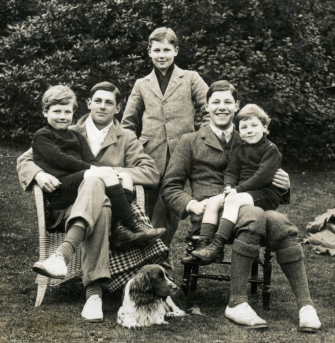
Above: Edward (on the right) sitting on his brother Henry's knee, moving to the left, Richard is in the middle, then James, with William on his knee. About 1913.
Below: Edward in about 1918
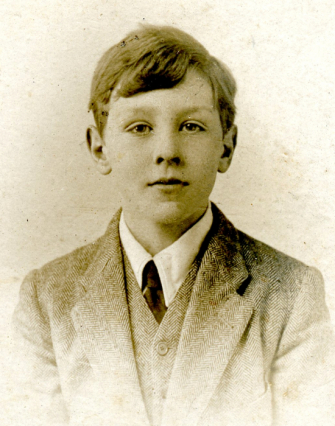
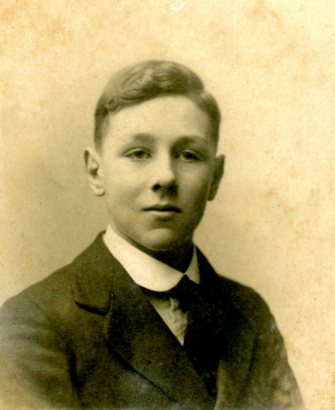
Above: Edward in about 1923
Below: Edward in 1929
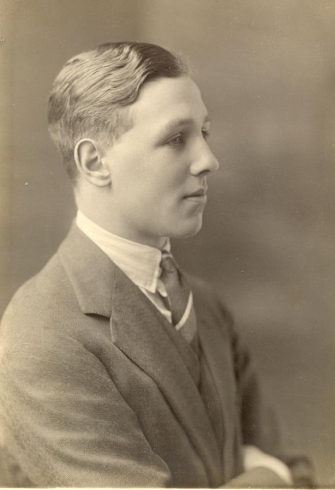
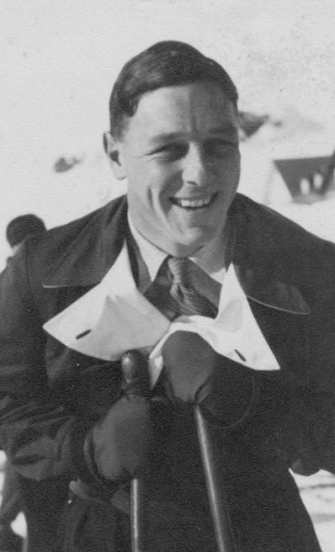
Above: Edward skiing in Austria in 1938, only narrowly escaping the anshluss.
Below: Edward's photograph of Chung King during a Japanese bombing raid.
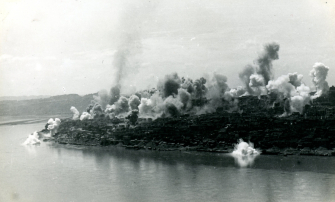
In 1938 he again returned on leave to the UK and went skiing in February in Austria, just before Hitler's invasion. He returned to the Far East by way of Montreal, New York and Vancouver, including the very interesting train journey across Canada by CPR, with a stop off in the Rockies.
Ted's next job was in charge of sales of heavy oil in the Philippines. He was stationed in Manila, and as usual travelled extensively and visited practically every inhabited island in the archipelago. He remained in Manila until early 1940, when he was transferred to be the Manager in Chungking (now called Chongqing) which was at that time the capital of Free China, and the centre of the Chinese fight against Japan. His time was completely taken up with trying to keep essential supplies of oil moving to the Chinese government and forces, first from Indochina and when that route was blocked by the Japanese, from Burma via the Burma Road, a journey for some 700 miles on mud roads. This required frequent visits to Hong Kong, Kunming and Rangoon (now called Yangon) by the tenuous commercial Air Service, entailing only night flights in unlit planes partly over Japanese held territory, with dawn landings on the makeshift airfield built on a sandbank on the Yangtze River. During this time Chung King was bombed regularly, but he occupied a house on the southern bank of the river, looking across to the city. The Japanese didn't bomb the southern bank, as only foreign residents lived there.
In the summer of 1941, he left Chungking and took over the post of Manager in Canton. This was in Japanese held territory, but he lived on Shameen Island, which was a British Protectorate. The job was a rest cure after Chungking, the post being one of maintaining a presence rather than encouraging a business in precious and much-needed oil.
At about 5:00am on 7th December 1941, the day of the attack on Pearl Harbour, Ted was woken up by his servant to say that the Japanese had taken over. At about 11 o'clock, the Japanese turned up, searched the house and confiscated his camera and a number of other things. He was then otherwise left undisturbed, although confined to the house. All telephones were cut and radios removed. He and other foreign residents stayed under house arrest for three months before all being moved to a very overcrowded local hotel. During this time they only received news from the Japanese or from the Swiss Consul who was responsible for all foreign nationals.
After some 4 months in internment, the Japanese announced their intention of moving all the Canton internees to Shanghai, and from there arranging an exchange. Although doubtful if this would ever materialise, a ship duly left Canton in April crammed with internees. There was nothing to indicate the nature of the ship's “Cargo" and the vessel was perhaps lucky not to be torpedoed on the way. On arrival at Shanghai, he boarded in the house of other Shell people and was allowed to wander round the city as if nothing had happened. In July, all diplomats and selected civilians who the Japanese had decided were to be exchanged for their own civilians caught in the West were put abord the Tatsuta Maru, a Japanese luxury liner marked with Red Crosses, bound for Lorenzo Marques (now called Maputo) in Mozambique. Fortunately Ted was amongst those civilians selected. The Japanese would not permit gin and whisky to be served at the bar, but they agreed White specials or yellow specials could be served (gin and whisky). The Tatsuta Maru arrived in Lorenzo Marques fat the end of August and Ted stayed there, again a guest of Shell staff, for about 10 days, awaiting the arrival of the Nakunda, which was bringing the Japanese internees from UK. Once the exchange had been completed they departed for England, arriving in Liverpool on 10 October 1942.
After a brief spell with his parents in Scotland, Ted was posted by Shell to West Africa, where oil supply and distribution required men of experience. He re-sailed from Avonmouth on an unescorted meat boat going to South America and was dropped off in Freetown, where he caught another boat for Lagos. After 6 months in Lagos and then a year in Freetown, where he was in charge not only of essential civilian supplies to the Colony, but also with responsibility for the bunkering of naval ships and convoys calling at Freetown, as well as for the refuelling of operational aircraft and flying boats on U-boat patrol and which were based locally in Freetown or at Bathurst in the Gambia not far away. By Christmas 1944, the war was beginning its final phase and Ted was granted 3 months leave in the UK. This time he returned for the first time by air, via Lisbon and landing at Bournemouth. He returned to Lagos in in March 1945, via Libya and Kano. On both these flights, he was flying at night over enemy occupied Europe!
In October of 1945, the war being finally concluded, staff were urgently needed to open up business in China again, and Ted found himself posted again to Canton to pick up and organise the mess left by the Japanese. He stayed there for 18 months and was then posted to Tientsin (now called Tianjin). While there, he for the first time had the opportunity of seeing Peking (now called Beijing), surely he thought one of the most fascinating cities in the world. After 6 months in this North China post, he was recalled to take over as marketing manager for Shell in West Africa, based on Lagos in Nigeria. Here he was to remain for the next 6 years, interspersed with periods of leave in England.
It was soon after his arrival in Lagos early in 1948 that he met his future wife Ann
Moir-Byres, daughter of the late Edward Byres Moir-Byres and his wife Vera Gibson, and granddaughter of George Moir-Byres of Tonley Aberdeenshire. Ann had come to Lagos to stay with friends after spending the War years in the British Red Cross in England, North Africa and Italy. Before she left Lagos in April 1948, she and Ted had fallen in love and on Ted's return to England on leave in August that year, they became engaged and were married on 10 September at All Saints Church, Kensington. After they were married and Ted's leave was over, he worked for a short spell in Shell's London Office before returning to Lagos in July 1949.
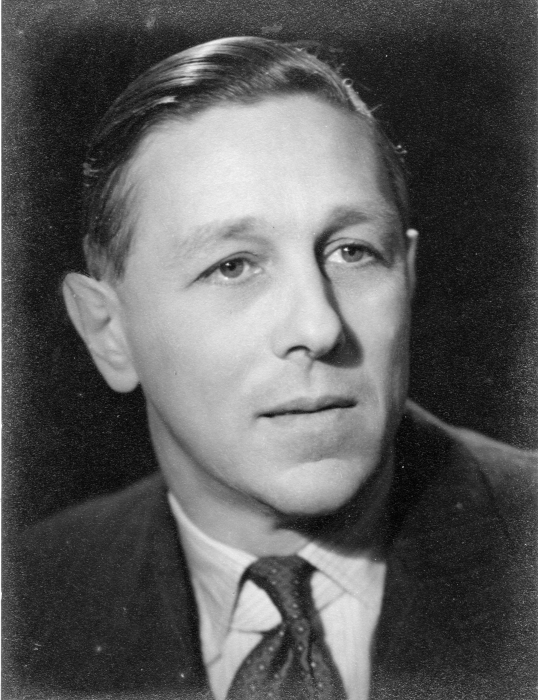
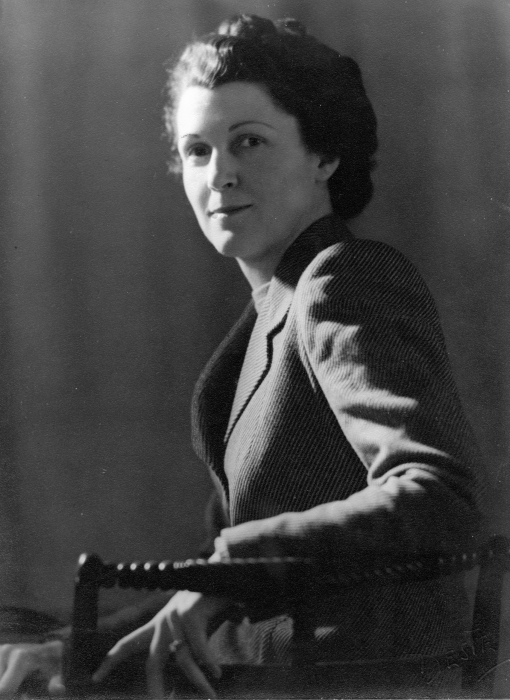
Ted and Ann had 3 children:
|
|
|
|
|
Alistair Byres Gammell |
28 July 1949 |
|
|
Graham Richard Gammell |
23 July 1951 |
|
|
Jane Roseanne Gammell |
16 April 1954 |
|
Ann and Alistair joined Ted in Lagos at the end of 1949 and spent a year with him,
returning to England early in 1951 in time for the arrival of Graham in July of that
year. The family paid a further two visits to Lagos, interspersed with Ted’s periods
of leave in England, until in early 1954, Ted was given a job in Shell's head office in London, and West Africa was left behind for good. It had been an interesting time to be in West Africa, where the colonies were gradually moving towards self-government, and Ted while there was deeply involved in the birth of the Oil Industry in Nigeria, heralded by the initial strike of oil by Shell and their partners in 1952/3.
While on leave in 1951 Ted and Ann had purchased a property near Great Missenden in Buckinghamshire, and it was there that they went on reaching England from Nigeria. For the next 9 years Ted commuted to his work in London from Great Missenden, and the family gradually grew up in the country surroundings that “White House” offered - 5 acres of paddock and woodland. Ted's job in London, which was marketing adviser on Bitumen and bituminous products to Shell Companies worldwide, took him on fairly frequent trips to Europe and less frequently to New York, the Caribbean and the Far East, but for the main, he was static in London.
In January 1963, Ted retired after serving Shell for no less than 37 years. In retirement, Ted found plenty to do and interest himself in and in 1964 was elected to the Buckinghamshire County Council as the Conservative Councillor for Gt. Missenden District. He was also active in managing the box office for the Little Missenden Arts Festival and in running an appeal for North Foreland Lodge School, where his sister, Finella was headmistress.
In 1968, Ted and Ann decided that with the children's education virtually completed, there were many advantages in moving away from an area which was rapidly becoming under the influences of London and the commuter belt. They therefore purchased a property at Minstead in the New Forest, and having disposed of White House, moved to Minstead in October 1969. Moving from Buckinghamshire involved Ted in resigning from his County Council work, but as he was by this time past 60 it was time for younger men to takeover anyway.
After the move to Minstead Ted did not again take up local Government work, but interested himself in village affairs, the Church Council, Conservatives etc, and found himself fully occupied. The Old Cottage was situated close to the centre of the village, and Ann took time to brush up her violin playing, which had lapsed whilst the family were young.
It was during this period that Ted gave his greatest tangible service to the Gammell family by researching and compiling a Family History of the years 1695-1946. He published this as a spiral bound book (a PDF is available in the downloads section of this website) and that research and publication forms the basis of this web-site. It was a major retirement project, for
which Ann accompanied him on many searches. To balance the scene, Ted was her companion on regular visits to the Aldeburgh Festival which delighted them both.
In 1979 Ted suffered a stroke which partially paralysed his right side. Thereafter he walked with the aid of a stick and learnt to write with his left hand. No one ever heard him complain.
In 1987 he and Ann left Minstead and went to Selborne in Hampshire, to share a home with his daughter, Jane, her husband Jon, and their children Sophie and William. They were frequently visited by their family, which by now included seven grandchildren, Edward, Finella, Annabel, Charlotte and James Gammell, and Sophie and William Butcher.
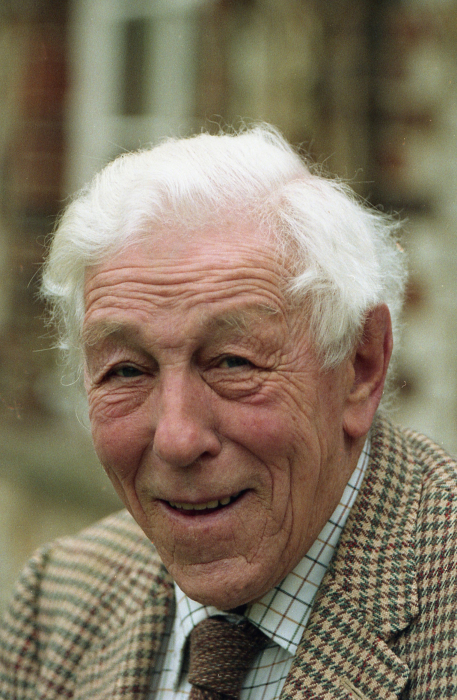
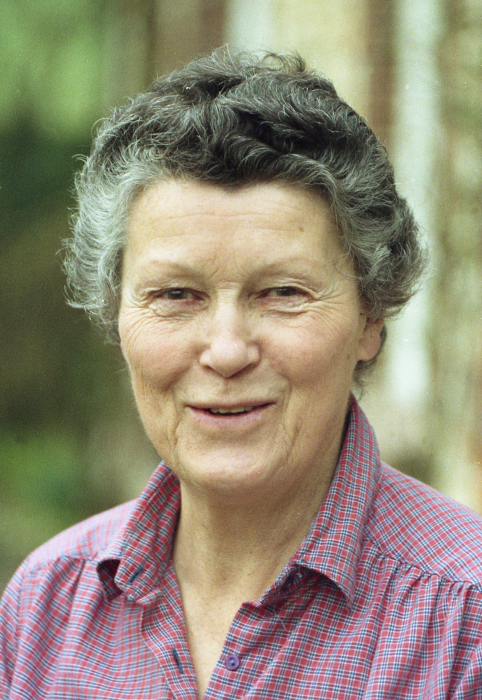
Ann died on 13 January 1996, but Ted, despite the weakness left by the stroke, remained active to the end. He had a particularly memorable 90th birthday party when, despite it being February, the weather was so warm that the entire party took place outdoors and he got mildly sunburnt!
He died at Selborne on 24 May 1999 and both his and Ann’s ashes are buried together in Selborne's churchyard.
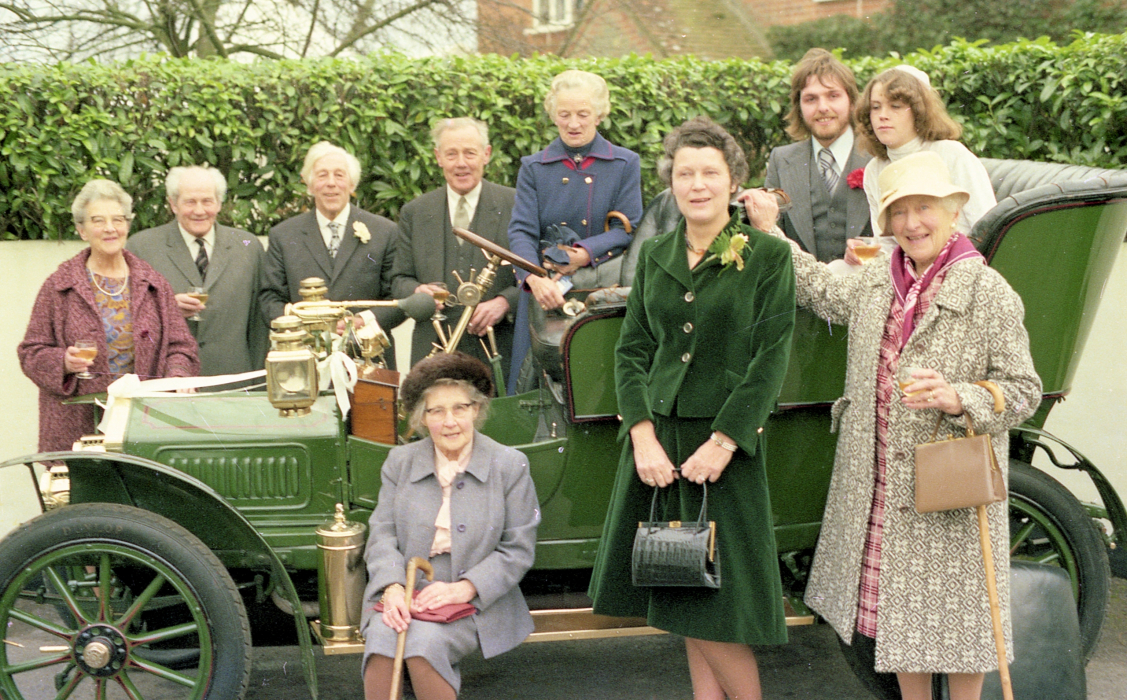
Photograph taken at Jane's (Edward Gammell's daughter) wedding to Jon Butcher, January 1976.
Grouped around the family's car that had been loaned for the day are LTR back row, Finella, John (Richard), Edward, William, Susan (William's wife), Jon Butcher and Jane Butcher (Edward's daughter). And at the front LTR, Barbara, Ann (Edward's wife) and Mary (John's (Richard's) wife}.
